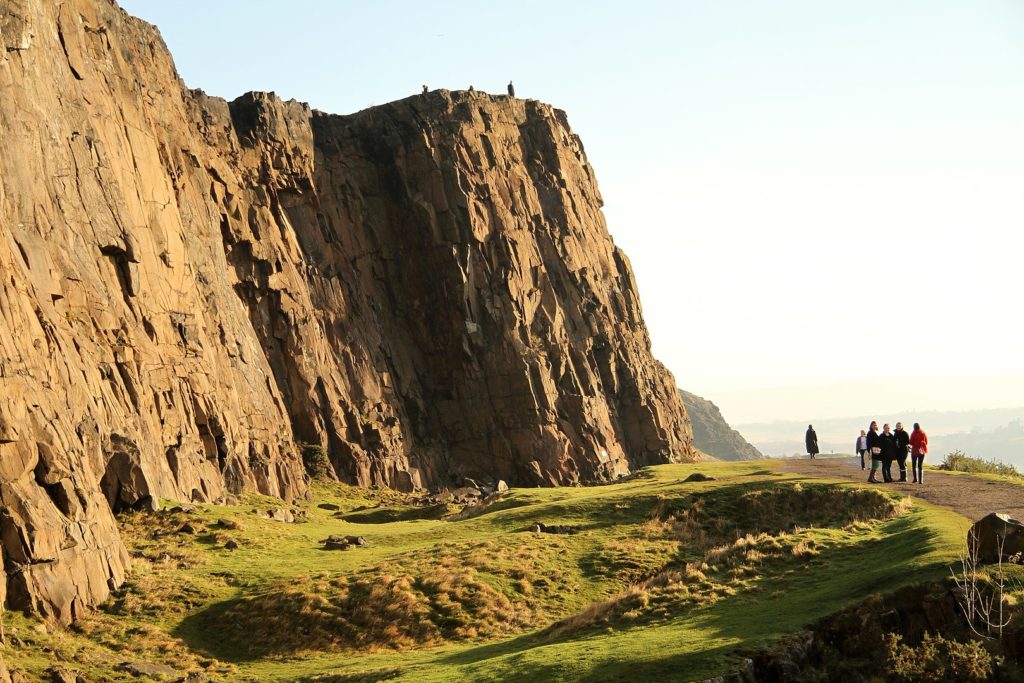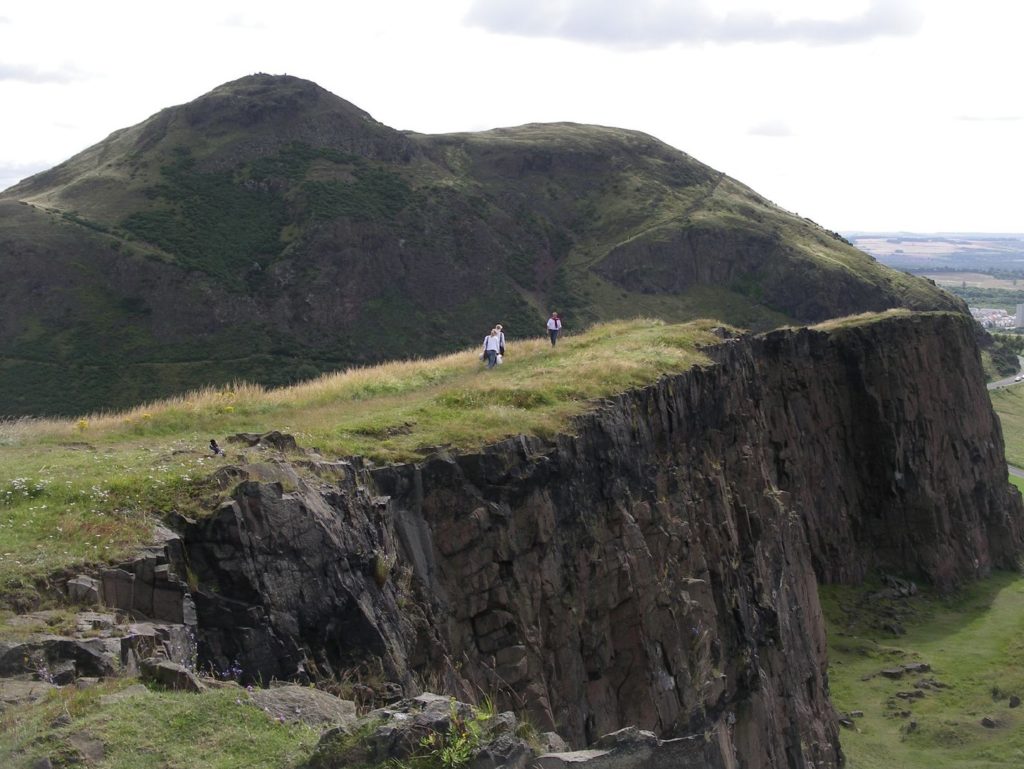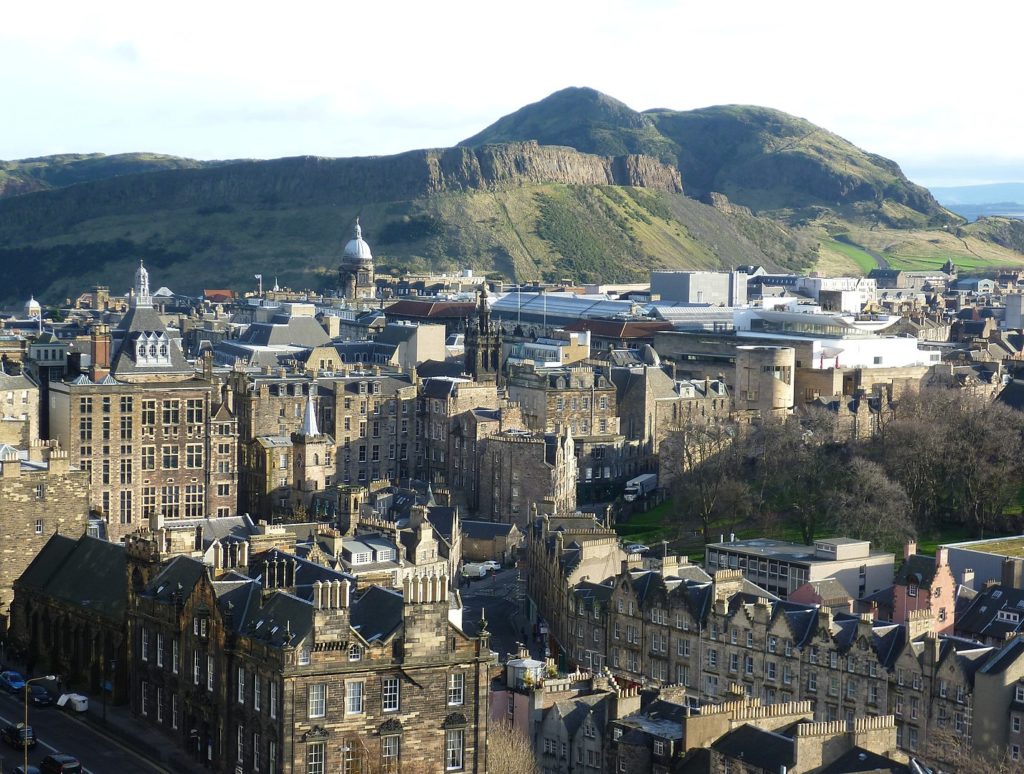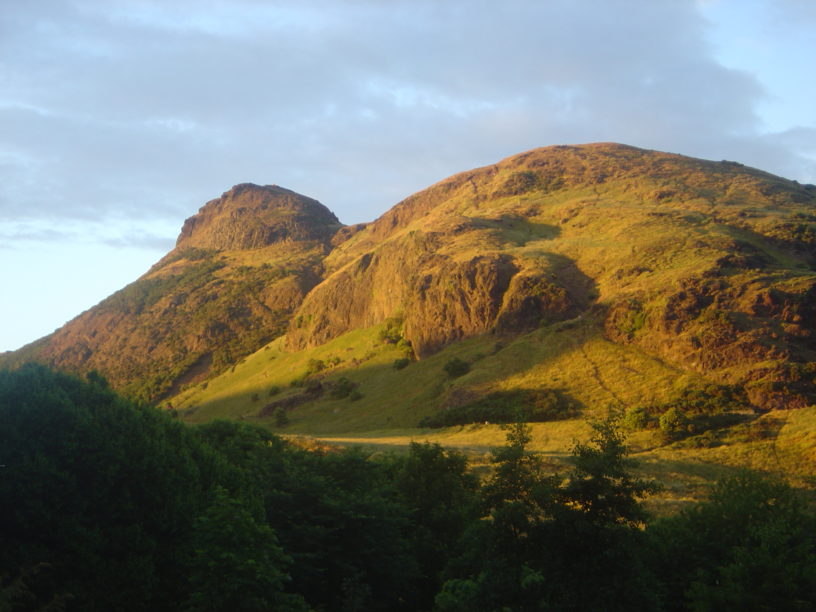
Arthur’s Seat By Ronnie Macdonald from Chelmsford – Wikimedia Commons
Top 10 Surprising Facts about Arthur’s Seat
Being the largest of the three parts of the Arthur’s Seat Volcano. Situated in the south-east of Edinburgh, Arthur’s Seat has been a popular hike for many a local and tourist alike, in all types of weather.
This extinct volcano, at the bottom of the Royal Mile, is hard to miss and offers impressive panoramic views. If you want some great views of the city from high and it’s a super short hike in Scotland. It’s linked to legends about the semi-mythical King Arthur. Beyond that, the rock has featured prominently in the culture of what makes the capital weird and wonderful and comes with a host of its own fascinating facts.
1. Prince Albert changed the way the hillside looked
Queen Victoria and her husband Prince Albert were in love with Scotland and made it very clear. Albert for the time was quite liberal and had some concerns about the bog that grew at the foot of the hill, next to the Abbey.
Furthermore, the land was badly polluted with the waste of the Old Town. He created a method which drained the bog. The Queen’s Drive was constructed so that the untamed Arthur’s Seat could be viewed from a carriage and created St Margaret’s Loch and Dunsapie Loch. These renovations changed how Arthurs seat appeared.
2. It is known as a sleeping dragon
Due to its mythical nature or legend has it, Artur’s seat is called the sleeping dragon by natives. An old Celtic folklore says that a dragon used to fly around the sky, terrorizing the region and eating all the livestock. Eventually it ate so much, that one day it lay down and went to sleep, and never woke up again.
3. It was used as a sanctuary for those in debt

Arthur’s Seat By Shadowgate from Novara, ITALY – Wikimedia Commons
At the foot of Arthur’s Seat stands Holyrood Abbey. The Abbey’s surrounding grounds were used as a sanctuary for people who could not pay their debts. They called them “Abbey Lairds” where they could live in peace away from their creditors within the boundaries of the Abbey’s ground. The grounds included Holyrood Park where they could relax in peace. They lived in modest housing, free only to leave on a Sunday.
4. Mini coffins were found in the cliff
In what was one of the stranger moments in Edinburgh’s history, in 1836 While on an epic hunt for rabbits, five boys discovered 17 miniscule coffins. Within the confines of a cave on the crags with these curious caskets contained a tiny wooden figures. They all had different clothes and were buried in three layers; the first two having eight coffins and the third having just one. Some see these coffins as an act of witchcraft, while others firmly believe that they’re linked to the gruesome Burke and Hare murders.
Charles Fort claimed in his “Book of the Dammed” that the coffins were all buried at separate times. “In the first tier the coffins were quite decayed, and the wrappings had moldered away. In the second tier, the effects of age had not advanced so far. The top coffin was quite recent looking.” The reason behind the coffins being there is yet to be discovered.
5. Edinburgh Castle was built near it

View of Arthur’s Seat from Edinburgh Castle By Kim Traynor – Wikimedia Commons
The massive and gorgeous Edinburgh Castle is about 2 miles from a nearby volcano. While the castle itself is not directly above Arthur’s Seat, it does sit atop a volcanic plug named Castle Rock. A volcanic plug is a volcanic object created from hardened magma roughly 350 million years ago.
However, visitors don’t need to be alarmed – the volcano has not erupted in over 350 million years. Aptly named “Arthur’s Seat,” it is the main peak among the seven hills in Edinburgh. Therefore, many visitors enjoy Arthur’s Seat for hiking and walking. Some areas of the mountain are a bit more challenging than others and require a permit to rock climb.
6. No one knows where it got its name
There are many rumours as to how the hill got its name but no one knows for certain the origin of it. Some say that it was the site for the legendary Camelot, the home of King Arthur and his noble Knights. Another comes from William Maitland, who suggested that the name was from the Scots Gallic, Àrd-na-Said, meaning height of arrows.
7. Arthur’s Seat is in many works of fiction
Due to its mystical nature, this famous hill has featured in many novels over the years. Some of the books its featured on are like Frankenstein by Mary Shelley, One Day by David Nicholls. In addition it has also inspired the likes of The Underground City by Jules Verne and in countless Ian Rankin novels.
8. Great spot to hike

Arthur’s Seat and Loch Long By portengaround – Wikimedia Commons
To walk to the summit of Arthur’s Seat normally takes between 30 minutes and 60 minutes depending on where you start from.
You will come across the Salisbury Crags in your exploration of Holyrood Park; a distinctive looking cliff face which rises over 150 feet, so be careful not to get too close to the edge.
9. Young women wash their face in the dew of Arthur’s seat
Traditionally on May Day, young women would climb the hillside and wash their face in the dew. Legend has is that this would keep them looking youthful and beautiful. The 1773 poem Auld Reekie, written by Robert Fergusson references this:
On May-day, in a fairy ring,
We’ve seen them round St Anthon’s spring,
Frae grass the cauler dew draps wring
To weet their een,
And water clear as crystal spring
To synd them clean
10. Remains of an ancient hillfort were found on it
Archaeologists working on top of Arthur’s Seat in Edinburgh uncovered the remains of an ancient hillfort thought to date back up to 3,000 years ago. Tracings of a prehistoric hill fort lurk amidst the romantic land. This refuge once existed in full force as a defended settlement.
Additionally, hill fort defenses are apparent around the primary massif of Arthur’s Seat above Samson’s Ribs. The prehistoric walls atop the extinct volcano were built by the Votadini — an Iron-Age Celtic tribe who once lived in south-east Scotland and north-east England. Archaeologists have also discovered evidence that the Votadini used part of the land within the hilltop settlement for farming. The now-barren site overlooking the Firth of Forth would have once been bustling with farmers and traders.
These have been surprising facts about Arthurs seat that i hope will give you more insight on this beautiful place.
Planning a trip to Paris ? Get ready !
These are Amazon’s best-selling travel products that you may need for coming to Paris.
Bookstore
- The best travel book : Rick Steves – Paris 2023 – Learn more here
- Fodor’s Paris 2024 – Learn more here
Travel Gear
- Venture Pal Lightweight Backpack – Learn more here
- Samsonite Winfield 2 28″ Luggage – Learn more here
- Swig Savvy’s Stainless Steel Insulated Water Bottle – Learn more here
Check Amazon’s best-seller list for the most popular travel accessories. We sometimes read this list just to find out what new travel products people are buying.









